Ancient Athens Part III

There are handful of things that make me feel like a kid again. Going to the beach, riding a pushbike, and the Australian Football League Grand Final all transport me back to the happy, carefree days of my childhood. There’s one other event that also turns me back into a frothing, excited kid, and that’s the Olympics. I love ’em. Every four years it’s a two week festival of sport that has me enthralled, even though I couldn’t give a crap about most of the sports during the inter-Olympiad period.
When you think about it, Athens really has contributed far more than its share of institutions to our modern way of life. Democracy, Nana Miskouri and of course the modern Olympic Games all came out of this ancient city. After spending my first days in Athens visiting the Acropolis Museum and the famous mount itself, I was keen to go to the Panathenaic Stadium to soak up a little Olympic history.
The Stadium is located about 2km east of the Acropolis, and as the seating is horseshoe-shaped, you can look into the arena from the street. After paying my 5 euro admission, and picking up my audio tour player, I headed into the Stadium.
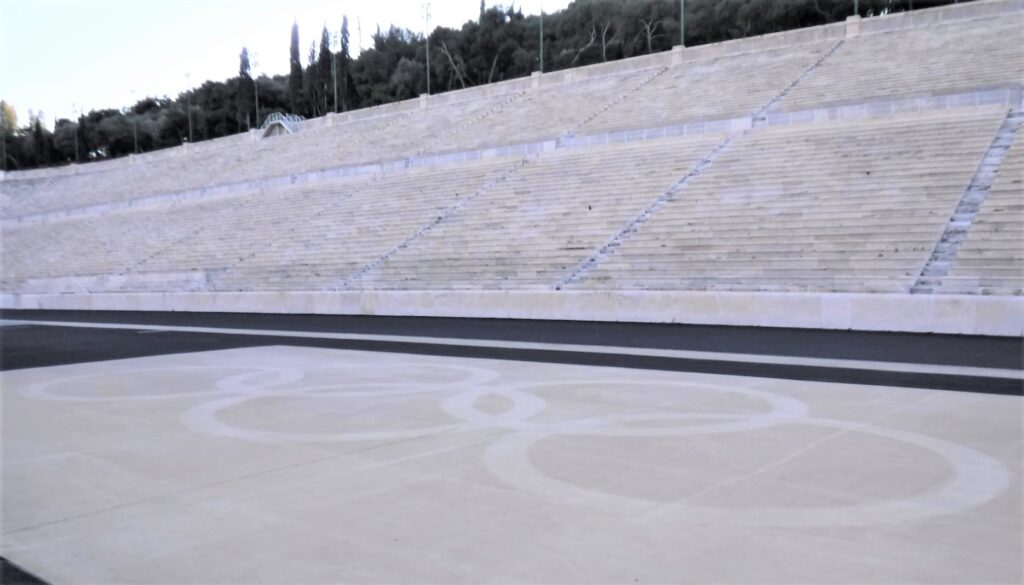
Now you may be thinking that the Panathenaic Stadium looks in pretty good nick for an ancient site, and that’s because whilst the site itself is ancient, the Stadium is not. Historians reckon the original stadium was built 330/29 BC, with major renovations carried out during the Roman times in 139 and 144 AD. The rise of Christianity saw gladiatorial fights and man-versus-wild-beast royal rumbles (and presumably also the spectacle of naked, oiled male athletes wrestling each other) increasingly frowned upon. With the wowsers* in charge, the once-grand stadium fell into ruin.
Guided by archaeological work conducted at the site, the Panathenaic Stadium was rebuilt to its current incarnation for the first modern Olympic games held in 1896. Enough marble to renovate thousands of Australian kitchens and bathrooms was used to recreate the arena, which can hold about 70,000 sports-lovin’ backsides. (Apparently in the original stadium, marble was also used for the finishing line on the track. Presumably, in this period before slo-mo replays, this assisted the judges in determining the winner of a race by noting who slipped over first.)
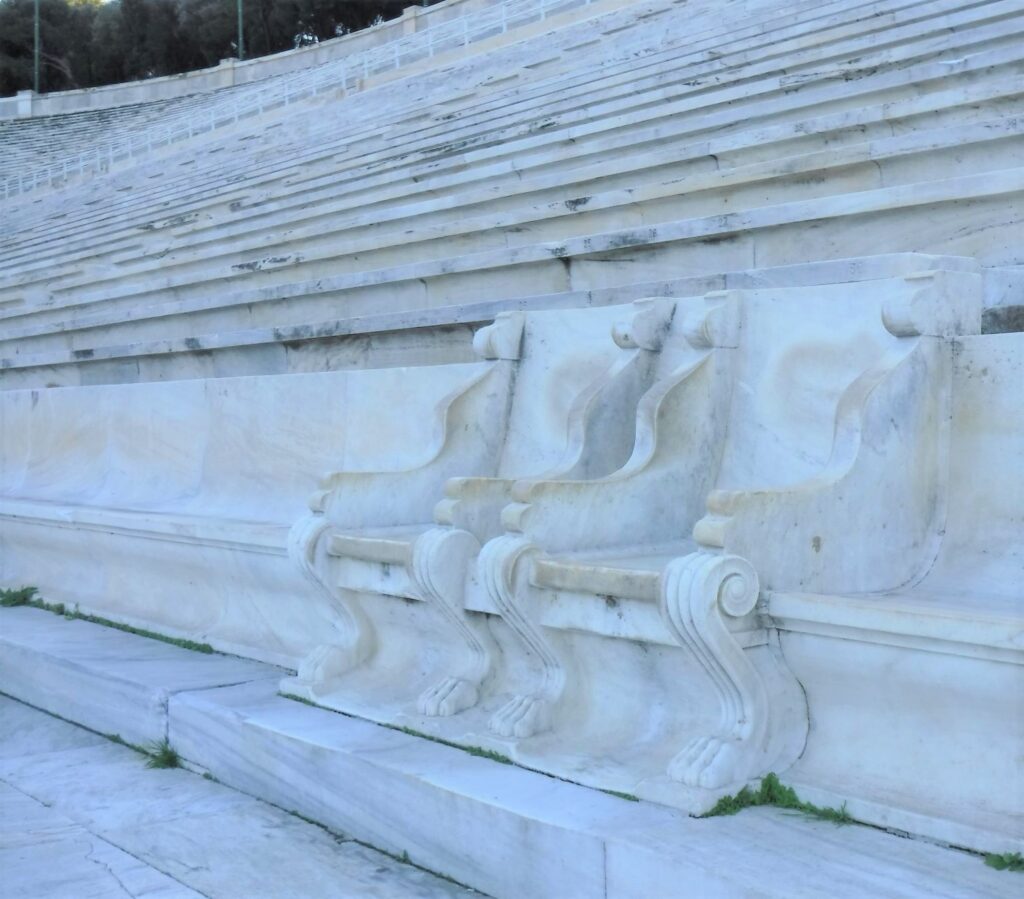
Regardless of the luxuriance of the marble, the seating is a little, ahem, Spartan, except for these two marble thrones. They were installed for the King and Queen of Greece when they attended the 1896 Games.
Haemorrhoid cream was available at the snack bar
I have to say, the stadium is bloody impressive. I can only imagine what the atmosphere would have been like when the Olympic marathon finished here during the 2004 Athens Olympics.
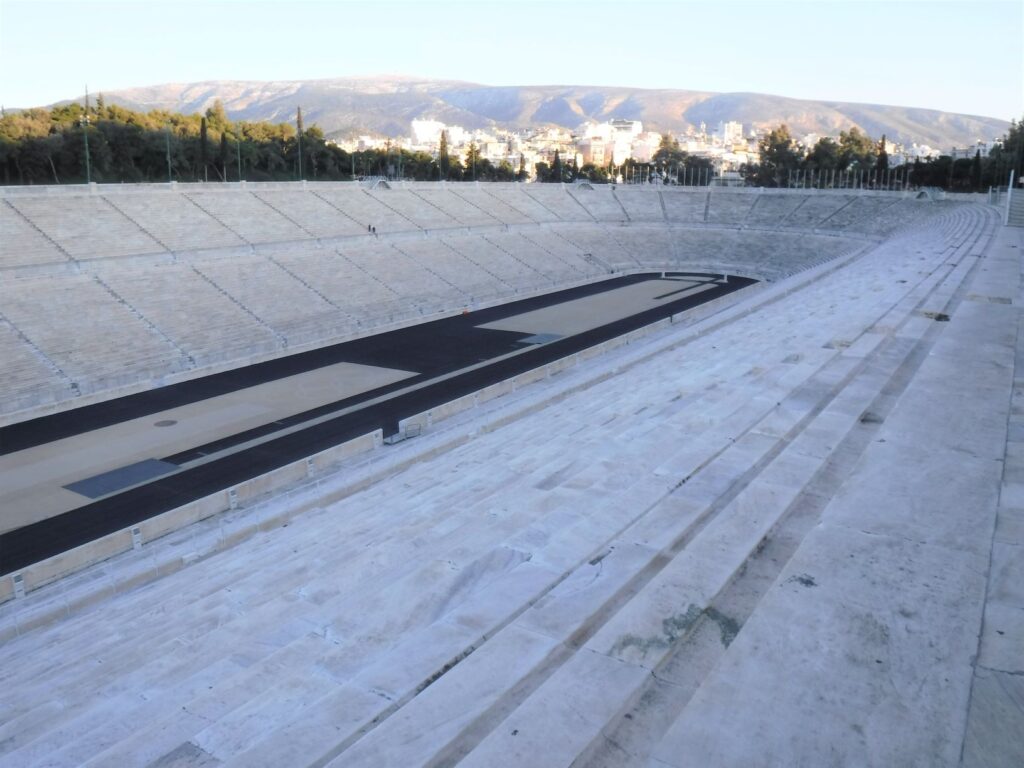
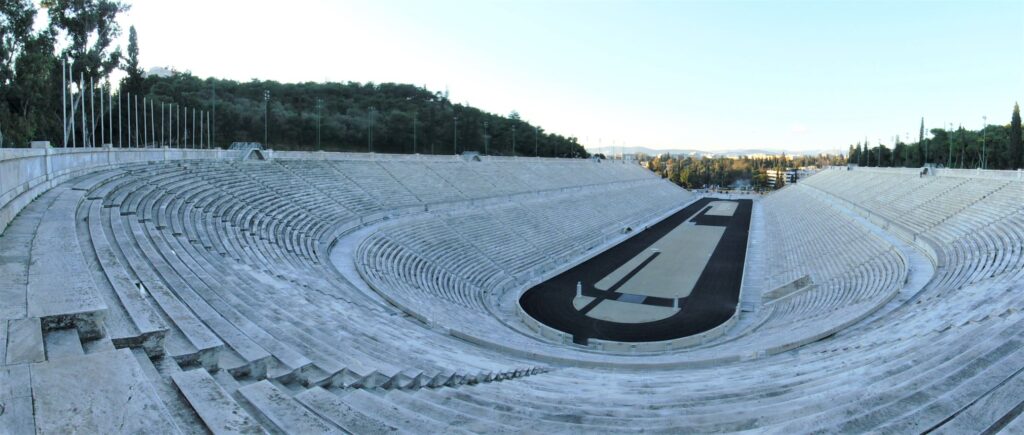
On the track corner at the closed end of the Stadium stands two Roman-era, two-sided herms. Herms are sacred objects associated with the worship of Hermes, and as Hermes is primarily associated with fertility, herm statues have renounced sculpted bodies and gone for just the head and genitalia.
It appears that this herm finds the sight of naked athletes running laps rather arousing
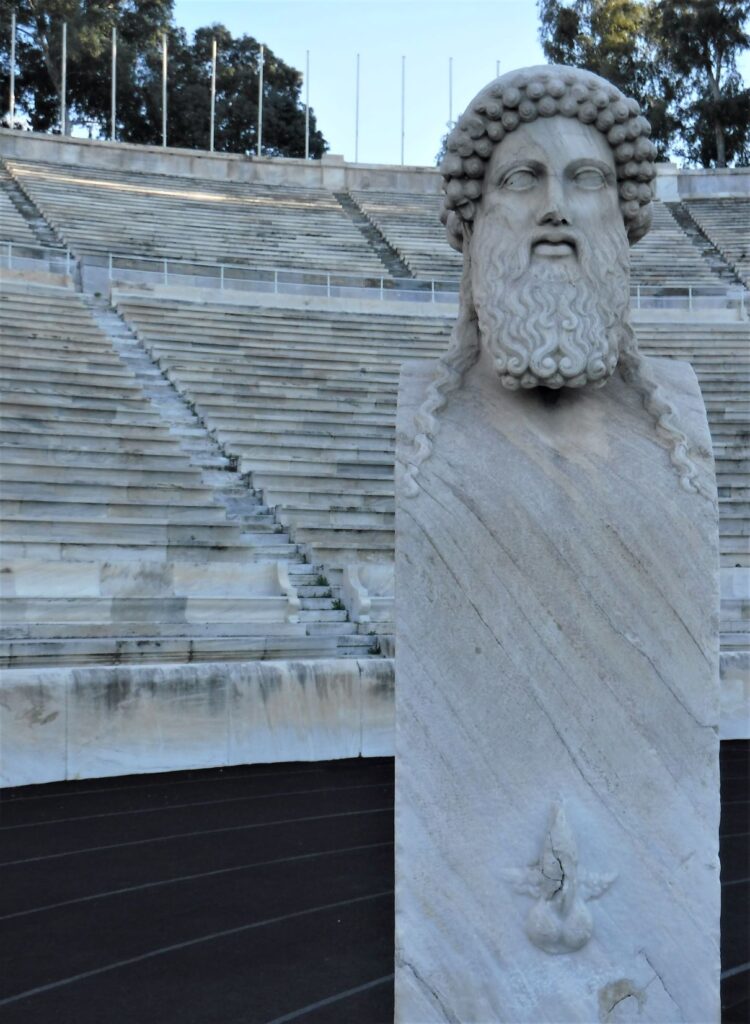
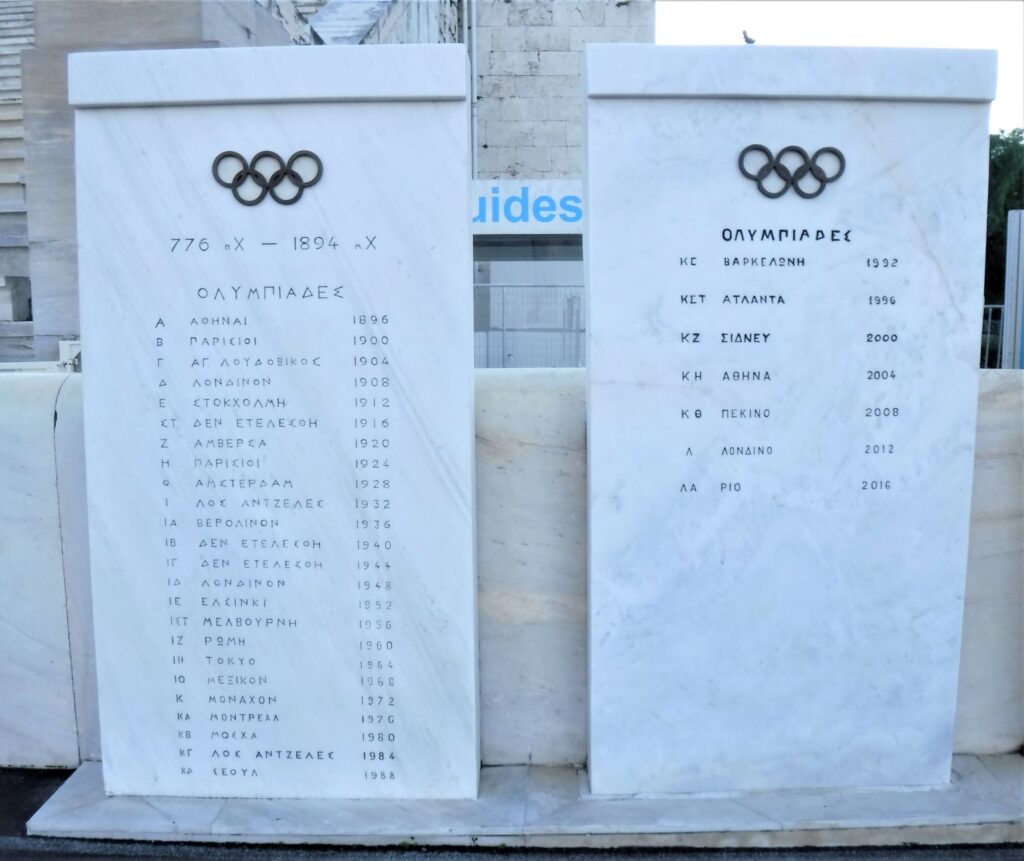
Near the entry to the Panathenaic Stadium, marble (of course) tablets list the host cities of each of the modern Olympic Games.
….and the winner is….ΣΙΔΝΕΥ!!!

Leaving the track, I headed into the cavernous athletes’ tunnel. Following this passageway around a corner and up some stairs, I arrived at a small museum.

Already pumped by having trodden in the footsteps of athletes past, I was giggling like a kid when I found the museum was full of Olympic torches! And not only that, the promo posters for each of the Games were also on display.

Naming rights for the Olympic Games were given to Olympia, where the first recorded Olympics were held way back in 776BC. Nowadays, a couple of months before the Games are due to begin, the Olympic flame is lit at the ancient Games’ site in Olympia, which is about 200 km west of Athens as the javelin flies. Runners then carry the flame to the Panathenaic Stadium, after which it travels to the host nation.
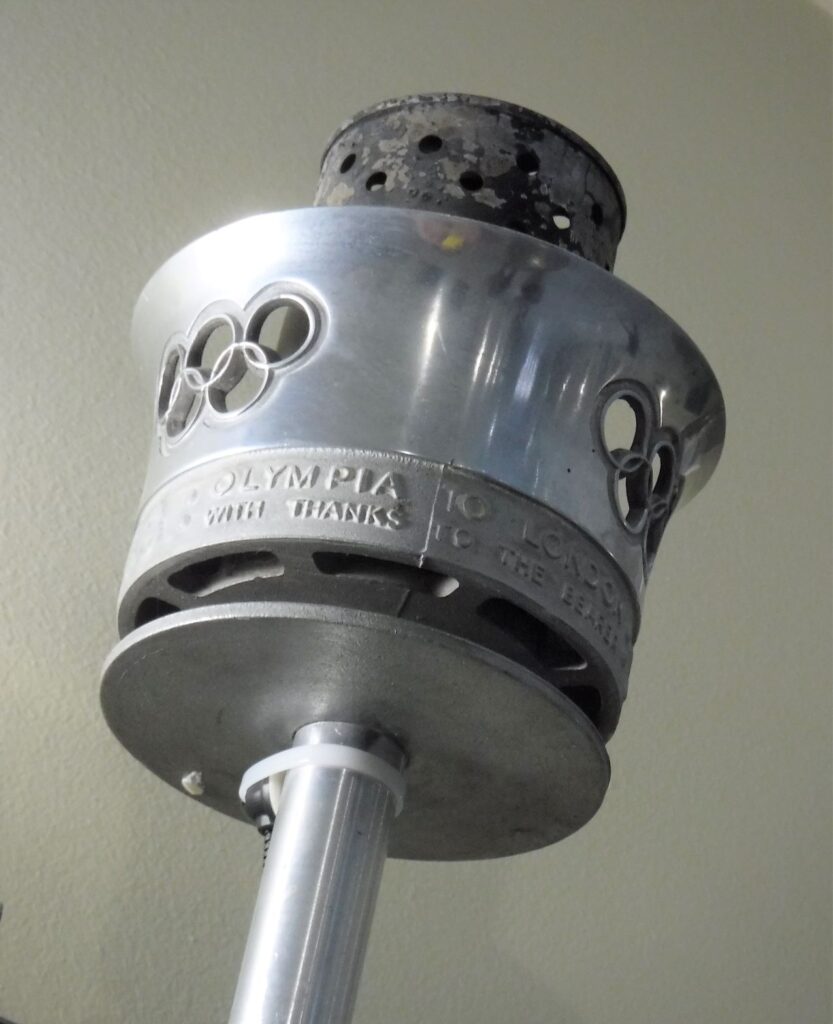
Olympic torch design has changed a bit over the years, from London’s regal 1948 design….
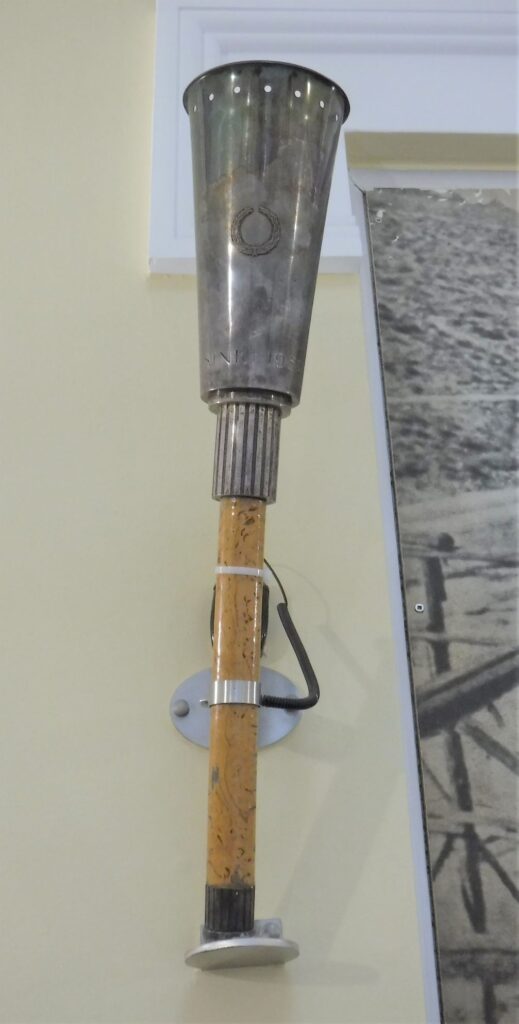
…to Helsinki’s 1952 flame-thrower…
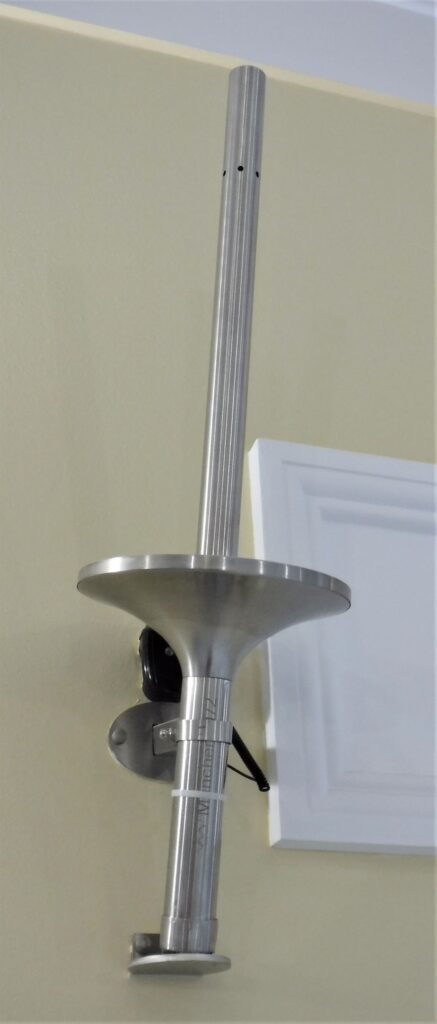
…Munich’s 1972 sawn-off jousting stick…
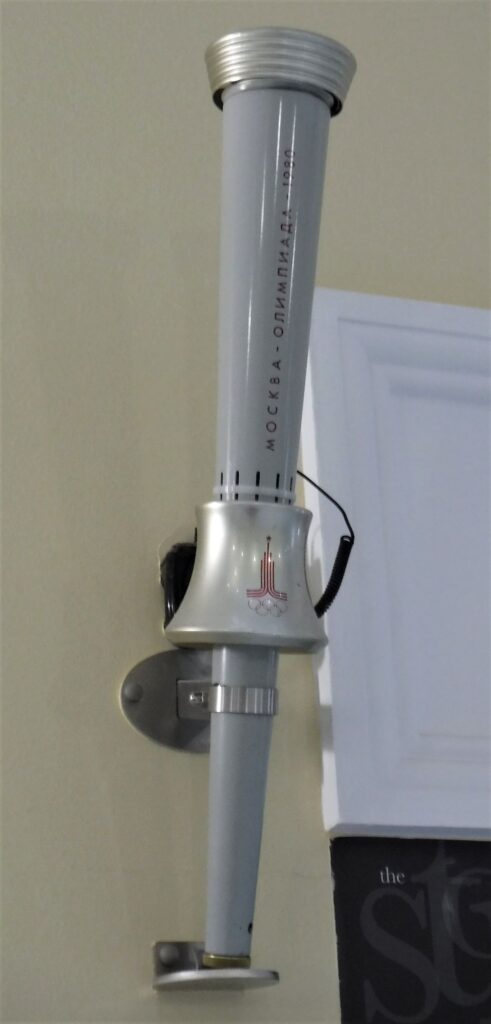
…Moscow’s 1980 light sabre…
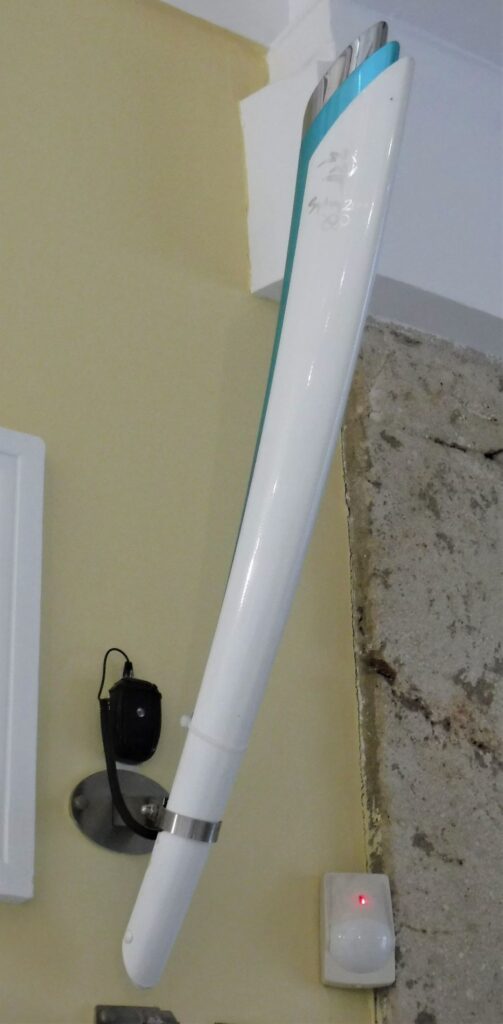
…and Sydney’s Opera House-topped boomerang.
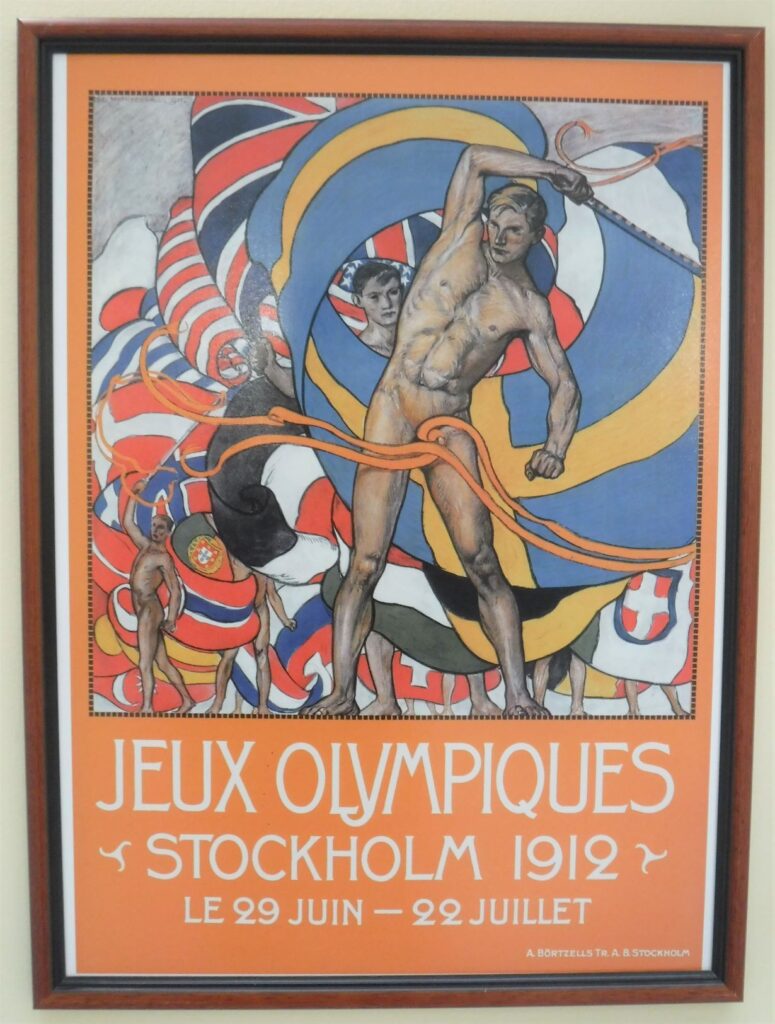
Apparently the poster for the 1912 Stockholm Olympic Games represents the parade of nations. The fact that the nations’ flagbearers are starkers** is a nod to the good ol’ days of the Olympics when athletes dropped the toga to compete. Still, it looks to me like the Swedish athlete is performing a rhythmic gymnastics ribbon routine, and has got said ribbon tangled up in his tackle.
The London 1908 Olympic poster shows an athlete running the reverse hurdles, a sport deemed ridiculous shortly after the Games and dropped in favour of synchronised swimming.
I must admit I got a pang of homesickness for Aus when I saw the Melbourne ’56 Olympics’ ‘invitation’.
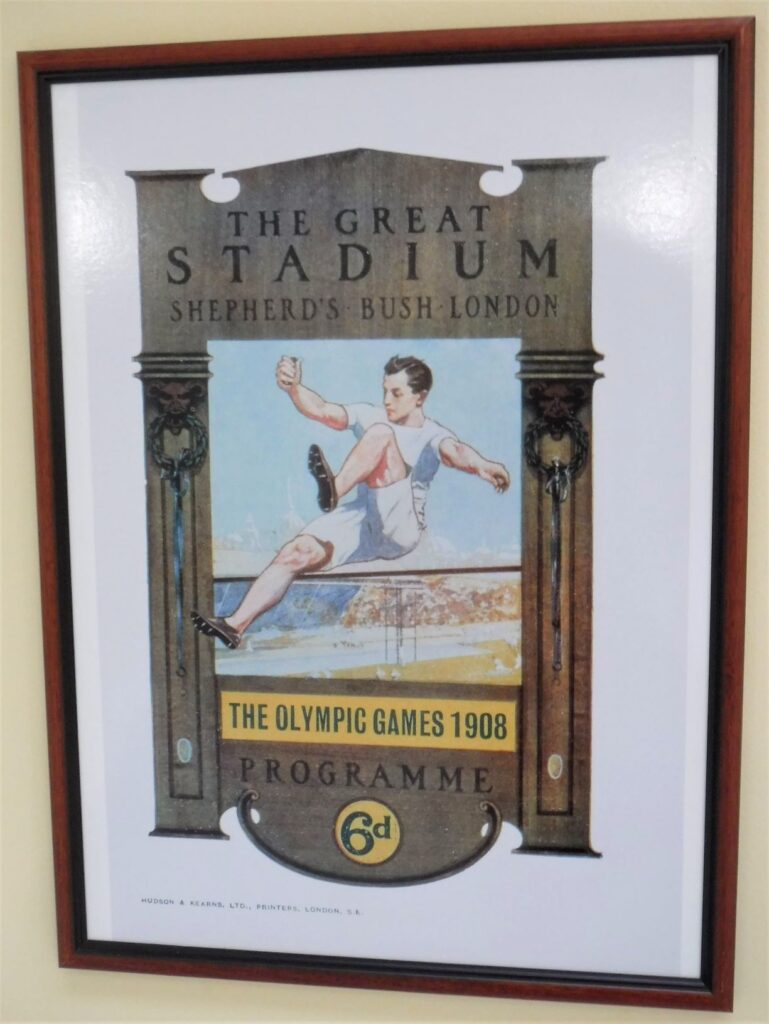

I reckon the Tokyo 1964 poster must have taken someone minutes to design.
Apparently Mexico’s 1968 poster was inspired by traditional indigenous motifs, however it also manages to nicely capture the psychedelic 60s.
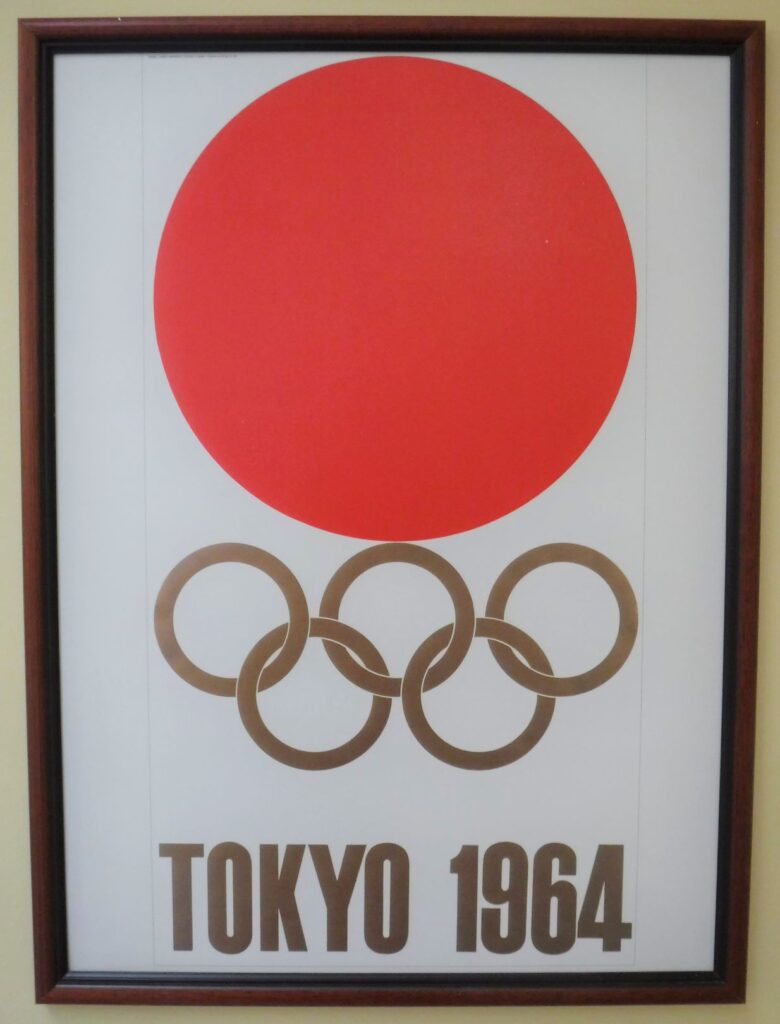
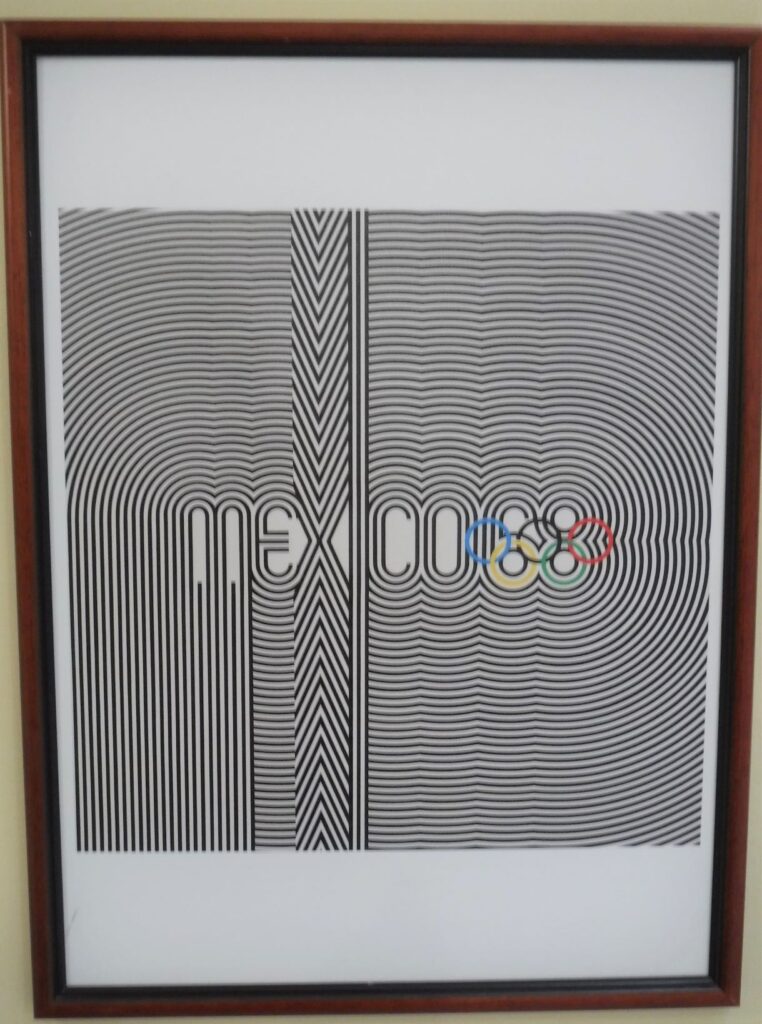
The poster for the Moscow 1980 Games has, unsurprisingly, a distinctly communist feel, and although the Sydney 2000 designs looks like a rooster, it still makes me proud as punch.
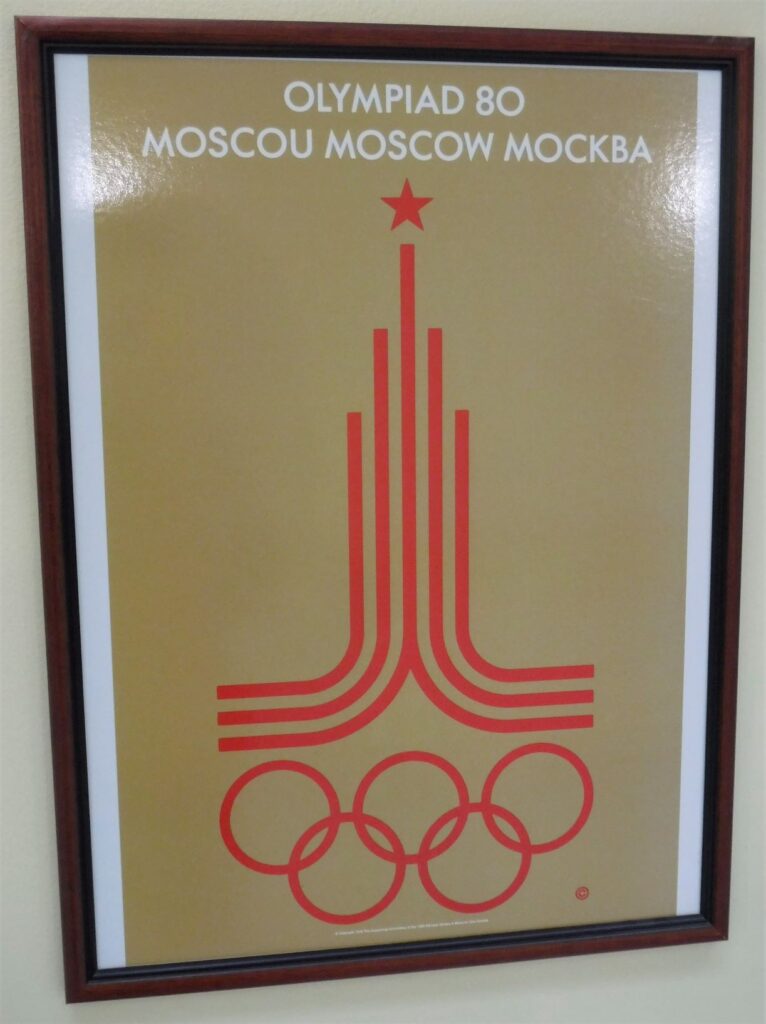
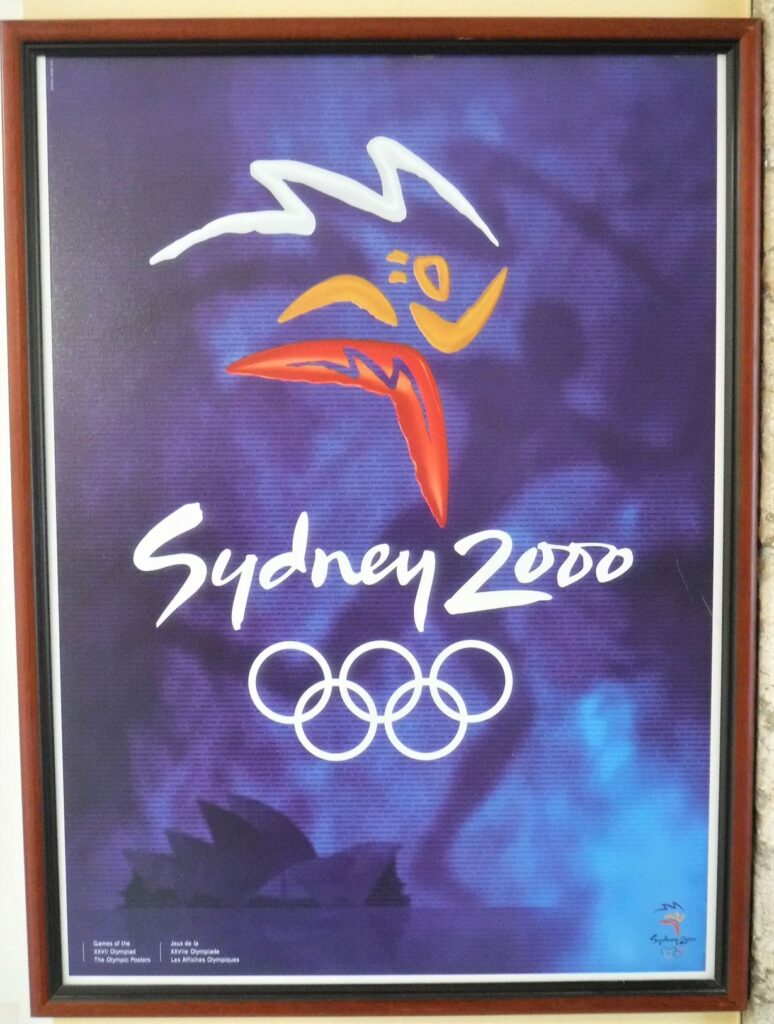
I really enjoyed checking out the torches and posters, and when I headed back down the tunnel and entered the Stadium through the competitor’s race, I was really living the Olympic dream.
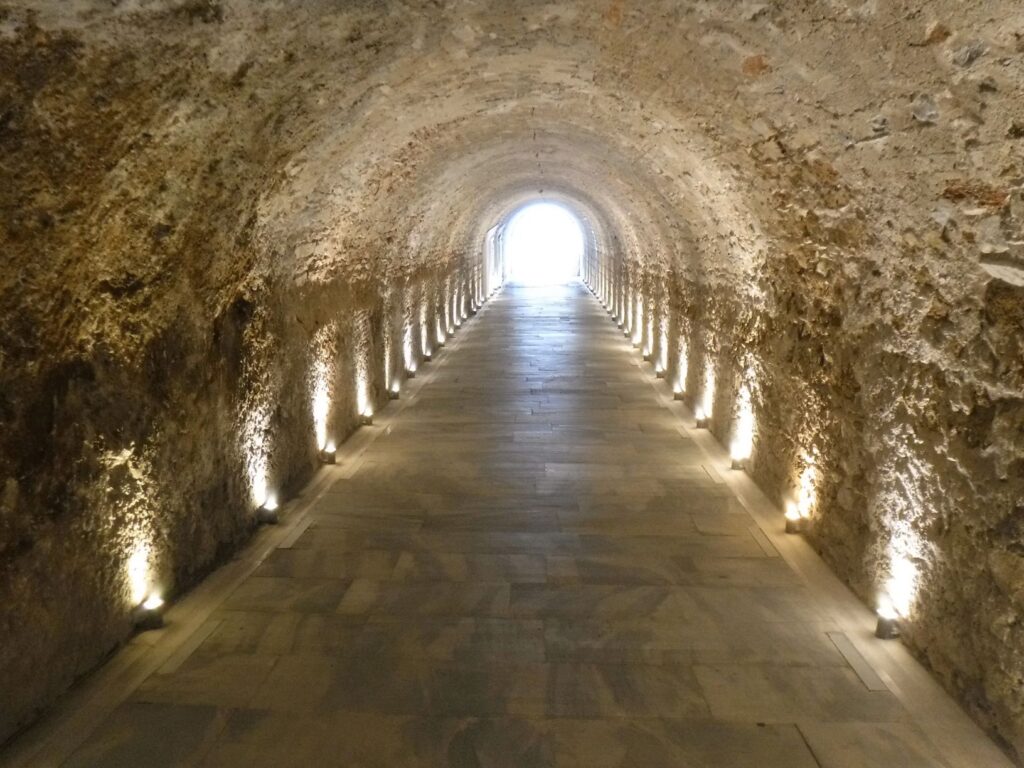

The only fitting way to complete my visit to the Panathenaic Stadium was to run a lap of the track. Needless to say, in order to be true to the spirit and custom of the ancient Olympic Games, I nuded up for the run. I have to admit, coming into the final corner, I couldn’t help but pick up the pace, and I when I crossed the finish line I had my chest pushed out, breaking the tape and taking the gold for Australia.
Music by Jean-Michel Jarre
I was really flying, so in case you missed it, here’s the slow motion replay.
Music by Vangelis. He’s Greek, you know.
Just like watching the Olympics on the telly, my visit to the Panathenaic Stadium took me straight back to being a kid again: cheering on the athletes and riding the emotional roller coaster alongside the Olympians during the biggest sporting event in the world. If you love the Olympics, make sure to put Athens’ Panathenaic Stadium on your travel list.
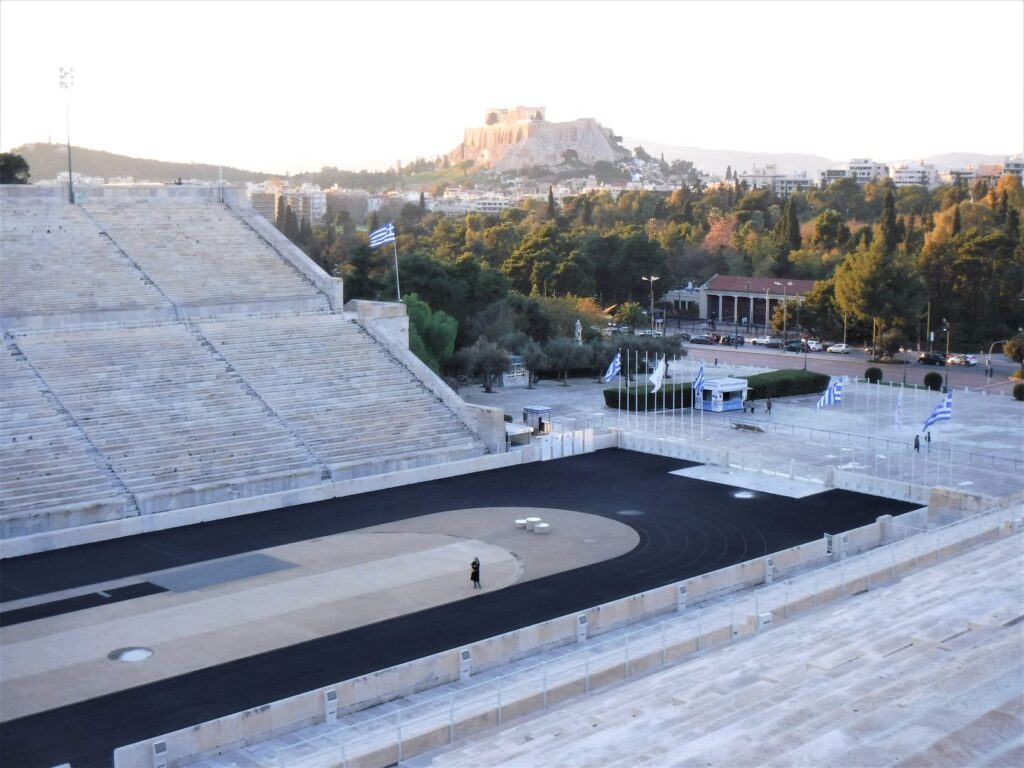
*Australian slang: puritanical people who disapprove of others enjoying themselves
**Australian slang: naked
Visit the Panathenaic Stadium website here
If you liked this post, you may also enjoy Bull Leaping, Acropolis Museum
Leave a Reply